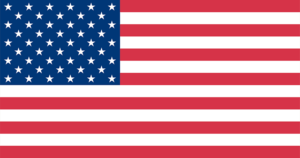This past February, Brazil’s largest festival – Carnival – was celebrated all over Brazilian cities, from Rio de Janeiro to Bahia, Salvador. Carnival 2018 officially began on Friday, February 6, 2018; though pre-carnival festas (parties) began back in January and continued to the end of the month. Carnival officially ended on the 18th of February. According to Guinness Worlds Records, Rio de Janeiro’s carnival event is the world’s largest, with millions of Brazilians and foreigners in the streets of Rio enjoying their time with family and friends, dancing and listening to a variety of of Brazilian and foreign music.

Carnival’s history dates back hundreds of years when Egyptians celebrated the beginning of Spring. Thanks to Alexander the Great, the Greeks would adopt the festival thereafter, and soon too would Romans (after having converted to Christianity), creating a food festival attached to Christianity where all types of food were eaten before the beginning of Lent. In fact, it’s said Carnival means ‘carne vale’ which translates to ‘farewell to meat.” It is thus largely celebrated in western culture with a large population of Christians. However, today Carnival represents something completely different, for no longer is it attach to religious orthodoxy but people-to-people relations, with each carnival varying from society to society with a uniqueness of its own.
In Rio de Janeiro, Brazil, the Portuguese brought Carnival with them, yet would-be Brazilians (in large part African slaves) would wholly transformed the festival as it is known today in Brazil where people are one in the same and can pretend to be who they want, and what they want, for a few days. The cultural clash between Portuguese, Africans, and Natives, even created Samba music in the early 20th century, with Samba schools opening up years later and ‘Sambódromo’ (Sambadrome) being established decades after as a venue for incredible Carnival parades. I attended one of their parades the first weekend of the competition and they were incredible. They are the life to Carnival itself; representing a key part of the city of Rio, with every parade from different schools filled with metaphors and messages to Brazilians and outsiders from the working-people of Brazil. Though many locals do not attend the show, it attracts thousands of visitors from around the globe. Below is a picture of my favorite parade, by the samba school Paraíso do Tuiuti, in which they criticize the government, elites, and discuss slavery, posing a question to society: “Is slavery really extinct?”

From the first day of Carnival I enjoyed time with friends, going out to different ‘blocos’ with different types of music every day and experiencing a one in a lifetime event. The culture of Carnival is all about forgetting, enjoying precious time with people and pretending everything is perfect. It’s essentially Brazilian culture times one hundred, one of the hardest aspects of brazilian culture I’ve had to adjust; for in the states efficiency, quickness top.
Disparities during Carnival, however, are even more evident; with dozen of parents and teenagers during blocos selling alcohol, water, and whatnot to support themselves, while other Brazilians and foreigners alike enjoying the festivities at mere feet away. In one of the most memorable moments during Carnival, a pair of three Brazilians adolescents, after having worked the whole day in the streets selling goods, waited for the bus one night while a group of Brazilians around the same age were drinking and waiting outside the metro to head to another bloco. In all, Carnival is something to experience, a place of festivities and enjoyment where I made new Brazilian friends, and even connected with some Americans and Canadians who were visiting, meeting an array of people and having the time of my life.



